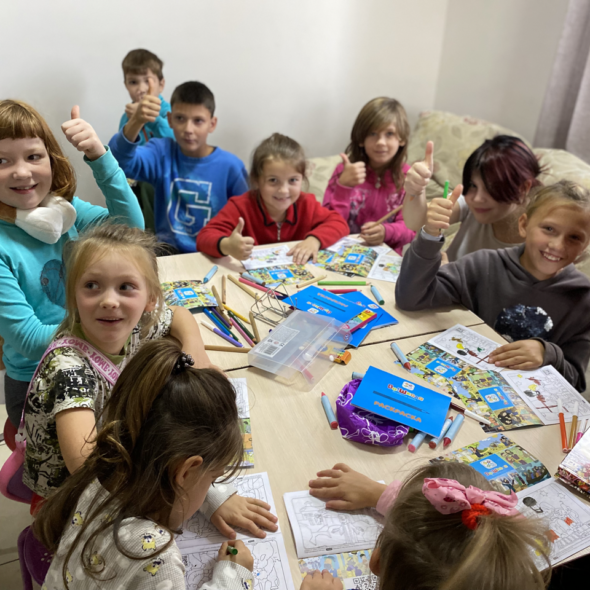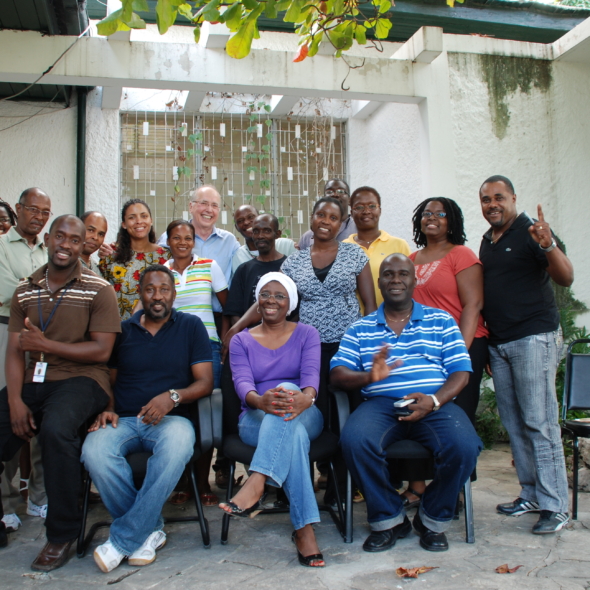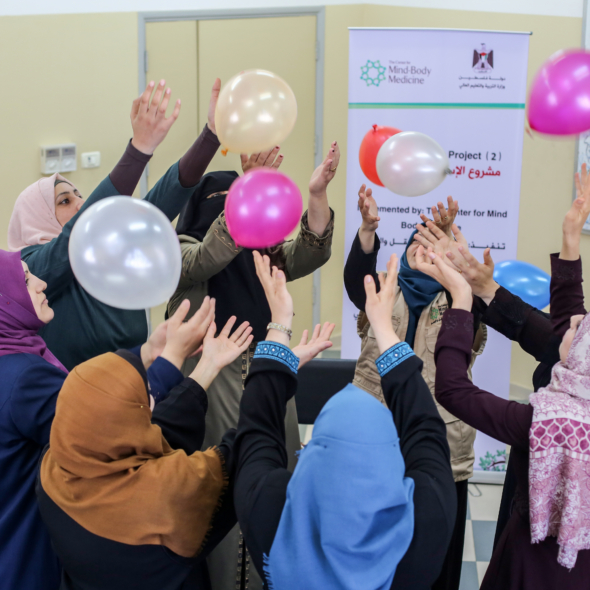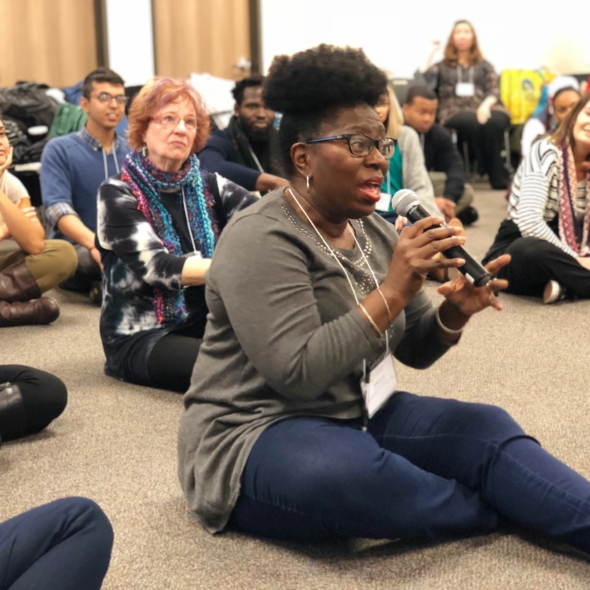BY: JAMES S. GORDON, MD
60% of Ukrainian children have been forced from their homes (UNICEF, March 30, 2022).
On World Mental Health Day (October 10, 2022), WHO noted that almost 10 million people (3.3 million children) at the present time are potentially at risk of mental disorders such as acute stress, anxiety, depression, substance use and post-traumatic stress disorder, as a result of the war in Ukraine. This estimate was made before the escalation of Russian attacks on infrastructure in Ukraine. (October 14, 2022, World Health Organization).
Children who have left Ukraine to live in Europe also have high rates of psychological distress. 50% of children aged under 16 now experience anxiety; this figure increases to 78% for children over 16 years old. (November 14, 2022, Save the Children)
In fact, every child in Ukraine, and all Ukrainian children who have left, are experiencing some level of distress.
What follows are a few pictures of some of the kids I met.
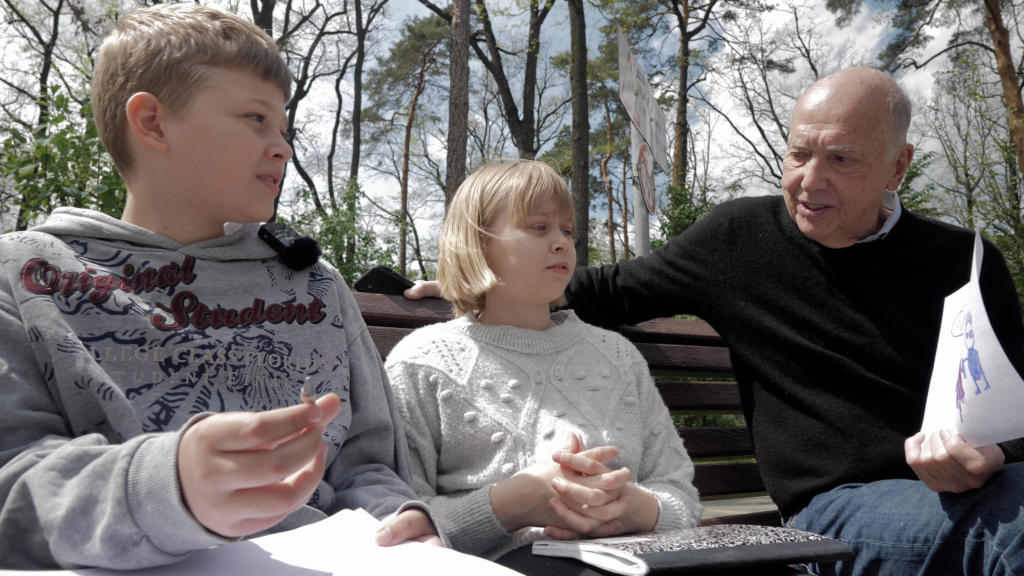
In a park in Irpin, a suburb next door to Bucha, where Russian soldiers terrorized the population, murdering and raping civilians in the early weeks of their 2022 invasion. Here are 7-year-old Sofia and her 10-year-old brother. They hid out with their parents for weeks, and then fled. Now, months later, they’ve returned, among the first children to do so, and are picking up the pieces of their lives.

Here is 19-year-old Angelina. She’s showing me the place where she slept, in the basement of her partially destroyed home in Irpin, where she and her family hid during the entire Russian occupation. I taught her Soft Belly Breathing and Shaking and Dancing, and her father, a long-haul truck driver, and his next door neighbor, joined in. Angelina is now sharing her wartime experience and what she learned from me in a hotline for young people in the Eastern part of Ukraine, who are still living under Russian occupation.
A grace note about Angelina’s coping capacity, resilience, and sense of humor: the pennants above her bed are those of favorite football teams that, during the Russian occupation, she could only follow in her imagination.
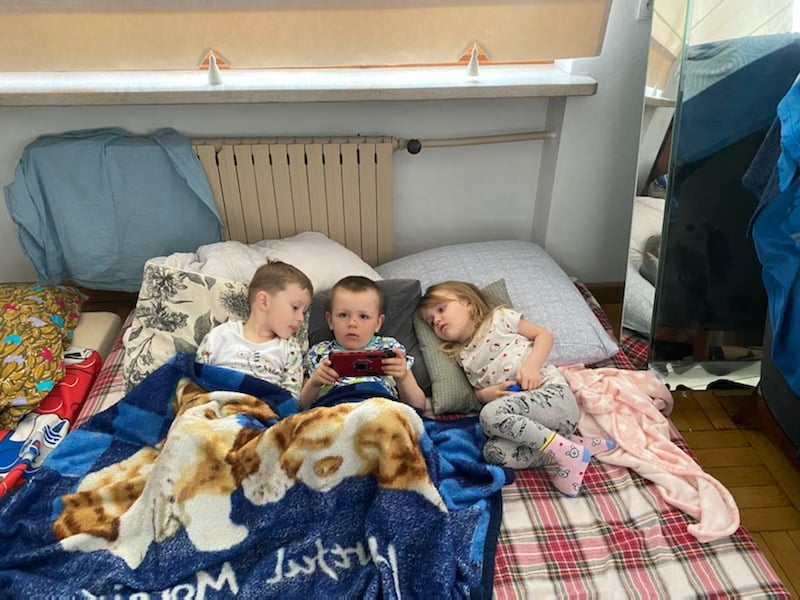
Here are a few of the several million children who have fled, most often with their mothers, from Ukraine. These kids are living in a shelter for 100 women and children in Lublin, Poland, run by a man who left his construction business to embrace what he describes as, “the most meaningful thing I’ve ever done.” The kids are safe and well cared for by devoted mothers, but they cry at night for fathers fighting on the front lines of Ukraine, and often enough, wet the beds in their sleep.

